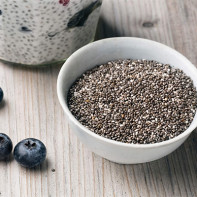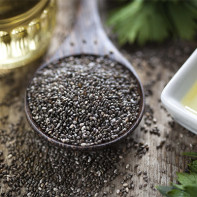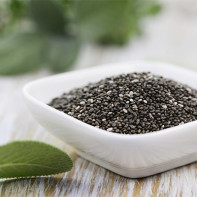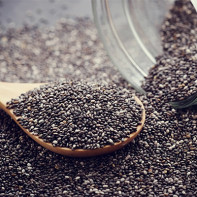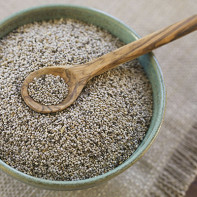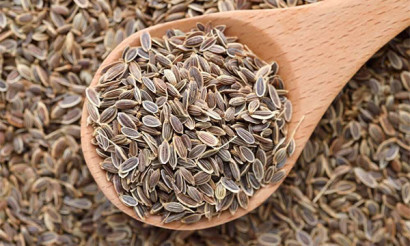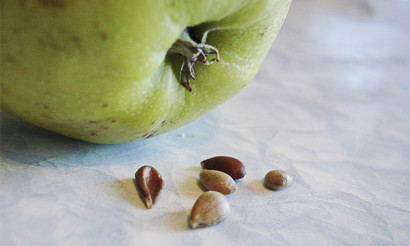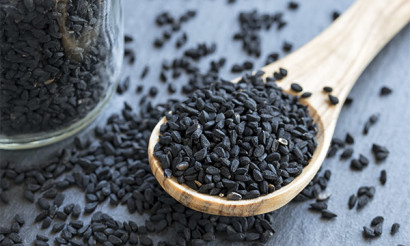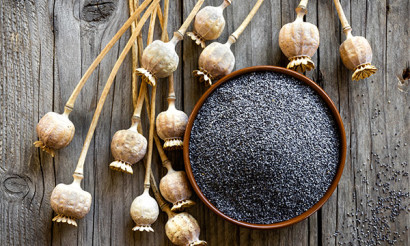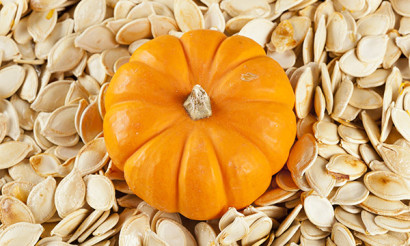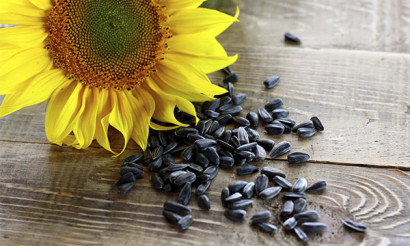Chia seeds: useful properties and contraindications
If you search well, in almost every corner of the globe you can find amazing plants that have many useful properties. They can be used for treatment instead of the usual medicines. We live in a wonderful time that allows us to get acquainted with the products and medicinal herbs from anywhere on the planet. One such product will be discussed in this article.
- What are chia seeds
- Types
- Composition and Calories
- Useful properties of chia seeds
- General Benefits
- For Women
- For Men
- In Pregnancy
- Breastfeeding
- For children
- How to take chia seeds for weight loss
- Chia Seed Oil: properties and uses
- Chia Seeds in Medicine
- Diabetes
- For pancreatitis
- For gastritis
- For bowel
- For constipation
- For gout
- Chia Seeds in Beauty Therapy
- For Face
- For Hair
- Harms and Contraindications
- How to choose and store chia seeds
- How to consume chia seeds
- How much can I eat per day?
- Can I Eat at Night and on an empty stomach?
- Do I wash my chia seeds before eating them?
- What to make with chia seeds: Recipes
- Porridge
- Smoothies
- Pudding
- Interesting Facts about Chia Seeds
Chia seeds (another name is Spanish sage), despite their strange name, have gained quite a wide popularity, especially in recent times. Chia seeds have found their application in medicine and can act as a cure for many ailments, used in cooking, and they can also be used to get rid of extra pounds.
What are chia seeds
Chia seeds are native to Central America. Spanish sage typically grows at elevations (up to 2 kilometers) above sea level. The height of the plant varies from half a meter to 1 meter. The structure is branched, with leaves on the stem, which can reach a width of 5 cm and a length of 8 cm, as well as beautiful flowers of purple-blue or white color.
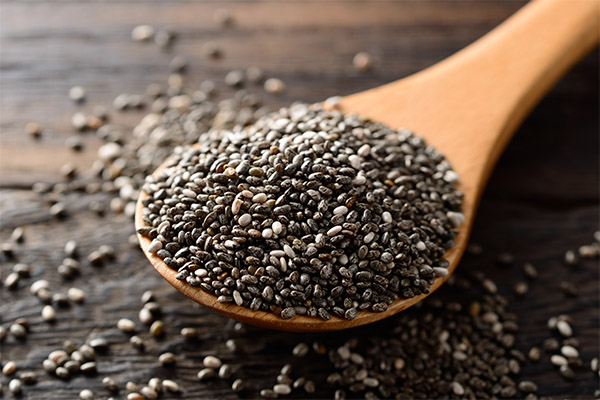
The seeds have an oval shape. The seeds are small, only 1 mm in diameter. White, grayish, dark and brownish seeds may be found, but they are identical in use. The flavor of the kernels is neutral, but nutty notes may be present.
To this day, it is not known exactly why the plant has such a name. According to some sources, it comes from the word "chiabaan" from the Mayan language, which means "fortification". Other experts say that the Aztecs gave the plant its name. In their vernacular is the word "chian", which translates as "fat". Both peoples used the grains for cooking. The seeds were also used to make medicines and tattoo ink.
Types
The seeds of the plant can be divided into 2 types - white and black. Each of the species is enriched with many useful substances, while there are some differences regarding the nutritional value of the products.
- White ones. The seeds are obtained from plants with white flowers. Seeds contain vitamins A, B1, B2, C, K, PP, and they are also rich in iron, copper, manganese, potassium, zinc, phosphorus and molybdenum. White seeds are very sought after and valuable because of their composition. The high amount of proteins and fats make the product a product that helps normalize the hormonal balance and supports the cardiovascular system.
- Black. This type of seed is almost as good as the white seed. The product is also rich in useful substances, but differs in their lower concentration. Black grains, unlike white ones, are more accessible. They contain the same vitamins and minerals as the white ones. This type is excellent for people who suffer from symptoms of diabetes, because the substances contained in the seeds help normalize glucose levels and also help the body to interact with insulin.
Composition and calories
100 g of the product contains:
- calories - 392;
- protein - 21.2 g;
- fats - 31.4 g;
- Carbohydrates - 37.5 g.
The product also contains omega-3 and omega-6 fatty acids and fiber. The product is rich in vitamins A, B1, B2, C, K, PP, as well as potassium, calcium, magnesium, zinc, selenium, copper, manganese, iron, phosphorus and sodium.
Useful properties of chia seeds
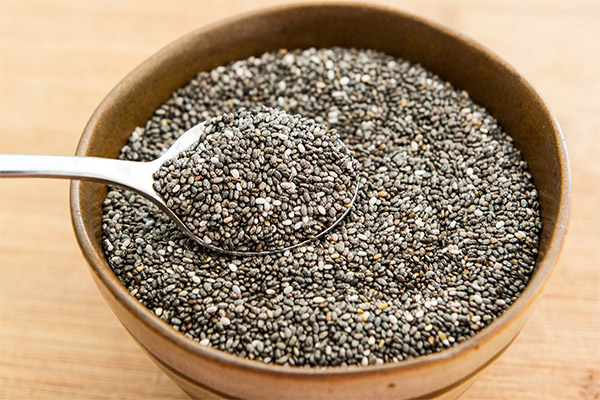
General benefits
- Benefits for weight loss. Chia seeds effectively help to fight extra pounds. The main reason for their effectiveness is the content of dietary fiber in the product. They are able to absorb a large amount of liquid, due to which there is a filling of the stomach, which eventually makes a person feel satiated, as digestion slows down. Seeds are usually used as a supplement to a basic diet.
- Cancer-fighting. The seeds contain a large number of antioxidants and alpha-linolenic acid, substances that inhibit carcinogenic processes and prevent the development of tumors. The grains are most effective in the fight against breast cancer. Alpha-linolenic acid destroys the cells responsible for the development of cancer, while not affecting healthy cells.
- Normalization of digestive processes. Thanks to the large amount of fiber contained in the seeds, they have a positive effect on digestion. The seeds support digestive processes, prevent constipation and regulate the rhythm of the intestines. They also help to absorb nutrients. However, it is very important that chia seeds not be used for inflammatory bowel disease and other digestive tract abnormalities.
- Positive effects on the heart. The potassium contained in the seeds helps to reduce blood pressure, so this product is recommended to include in the diet of people suffering from hypertension and heart disease. In fact, in the case of regular use of the seeds of this plant, after some time you can notice a decrease in blood pressure. It is worth noting that the product contains omega-3 fats and fiber, which have a positive effect on the cardiovascular system. They lower the level of "bad" LDL cholesterol and triglycerides, while increasing the level of good HDL cholesterol. This makes it easier for the body to cope with various heart diseases, including coronary heart disease and atherosclerosis. In addition, potassium, sodium, calcium, and magnesium support heart function, thus effectively reducing the risk of heart attack.
- It improves brain function. Chia seeds contain quite a lot of magnesium, which affects the quality of sleep, helps to combat chronic fatigue and reduces muscle cramps. Because of its high magnesium content, eating chia seeds helps to combat nervousness and a strong susceptibility to stress. In addition, the omega-3 fatty acids in the product improve brain function, memory and concentration, as well as facilitating learning and memorizing. Therefore, it is especially recommended to include them in the diet of people who perform regular mental work, as well as children of preschool and school age.
- Support the health of hair, skin, and nails. Antioxidants contained in the seeds protect the body from free radicals, i.e. compounds that affect the rate of aging of the skin. In addition to antioxidants, vitamin E and omega-3 acids also affect skin health. They counteract atopic dermatitis. In addition, Spanish sage seeds contain calcium, iron and zinc, which greatly improve hair and nail health.
- Promoting bone and dental health. Spanish sage contains much more calcium than dairy products. Therefore, this product is recommended to be consumed in cases of deficiency of this macronutrient. In addition, the phosphorus contained in grains gives teeth and bones more strength and makes them less prone to fractures.
- Immunity Support. Chia seeds have a huge impact on the body's resistance to various diseases and overall health. The fatty acids in the product prevent autoimmune diseases and strengthen the immune system. In addition, arginine contained in them improves and accelerates the healing of wounds.
- Normalization of hormonal balance. Chia seeds contain lignans, which are very important for health. These are phytochemical compounds responsible for regulating hormone levels in the body. This is why the seeds are recommended to be consumed by women during menopause. Chia seeds help maintain hormonal balance. In addition, the high content of antioxidants, minerals and vitamins gives the body energy, which makes you feel better.
- Benefits for the eyes. The omega-3 fatty acids contained in chia seeds have a positive effect on eyesight, especially when it comes to the elderly. Regular consumption of this product helps reduce the risk of developing yellow spot degeneration.
- Source of energy. The Mayan tribes used chia seeds as a means of satiating the body and giving energy. The product can be of great service to people who regularly go to the gym, as well as those who have jobs that involve heavy physical exertion.
- Alternative to eggs. The seeds are ideal for vegans and people who are allergic to eggs. Due to their gelatinous properties when in contact with liquid, the grains are an ideal substitute for eggs in a variety of dishes. To prepare chia seeds as an egg substitute, simply mix 1 tablespoon of chia seeds with 3 tablespoons of water. Then you need to leave the product for 15 minutes, after which it can already be used.
- Gluten-free product. Some people may have a gluten intolerance. Chia seeds, which have the texture and features of cereals, do not contain gluten, so you can safely use them in this case.
- Protein Source. Chia seeds contain quite a lot of protein, while being cholesterol-free. Protein helps the body form new cells and plays a structural role in tissue function. A small handful of seeds contains about 10% of the recommended daily protein intake. This is not specific to plant seeds, as most protein-rich foods relate to meat.
- Getting rid of heartburn. The healing properties of chia seeds can be used to treat irritable bowel or heartburn. Heartburn occurs when stomach acid enters the esophagus. Chia seeds help get rid of stomach acid and pain.
- Involvement in cellular repair. After surgery, injury, or just after a hard workout, the body needs to work hard to repair damaged cells. The micronutrients, vitamins, omega-3 acids and amino acids found in the product help regenerate cells.
For women
The use of the seeds is recommended for women during the menopause, because they help normalize the hormonal background, have a positive impact on feelings of well-being and alleviate stressful conditions. The seeds also help normalize the menstrual cycle and relieve menstrual pain.
For men
It is recommended that men use this product as a preventive measure against prostate cancer. The seeds also help to maintain sufficient physical endurance in case of intensive workloads. This product is no less important for maintaining and strengthening the health of the reproductive system. The seeds are recommended to be consumed during the period of pregnancy planning to improve the quality of sperm. Also, the product is able to perfectly saturate the body, as even one small handful of seeds will be enough to feel normal throughout the day.
In Pregnancy
During pregnancy, chia seeds support the processes associated with the development of the child, as well as improve the health of the female body and improve the well-being of the mother. The seeds also saturate the body with minerals and vitamins. Phosphorus and zinc present in the product will support the body during the period of pregnancy, as well as strengthen the immune system. In addition, the seeds will help in the development of the nervous system, as well as have a positive effect on the brain of the fetus.
With all the benefits of the product it is worth paying attention to possible allergies. If a woman previously had an allergic reaction to sesame or mustard, then chia seeds should be excluded from the diet. In any case, take risks and experiment with the product is not worth it, because this can have a negative impact on the baby. It is also important to remember about moderation in consumption, especially in the case of digestive problems.
When breastfeeding
It is allowed to consume the seeds during lactation, but again, moderation should be observed. After 2 months of breastfeeding it is already possible to include this product in your diet a little at a time. You should start with 1 teaspoon of grains, no more. After taking it, you need to monitor the reaction of the baby. If there are no side effects, you can continue to use the ingredient. After some time, the daily dosage of the seeds may be increased to 2 two tablespoons.
After 7 days of use, you need to take a 2-day break. You can use the seeds for no more than 10 weeks. It is recommended to drink the seeds with water without gas. This will help the product to digest faster and better and activates more active milk production in the mother.
For kids
Chia seeds support the harmonious development of the child's body. The product is good for teeth and bones, brain and overall development. For infants and young children chia seeds may be difficult to digest, so give the product is allowed, but in small quantities. In this case, you should start with 1 teaspoon, gradually increasing this dose. Although chia seeds are an extremely useful product for both adults and children, it is necessary to determine whether the child has an intolerance to the product. If in doubt about this, it is recommended to consult a specialist.
How to take chia seeds for weight loss
In general, there are no clear rules for the use of grains for weight loss. At the same time, experts highlight some recommendations:

- The daily norm of consumption - up to 2 tbsp of seeds.
- After taking the seeds, they should be drunk with water.
- The seeds should be consumed before a workout.
- Do not put the seeds in salads, but the gel made of them.
The seeds can be used as part of a variety of dishes, as well as in their natural form. The seeds have a neutral taste, so they do not affect the quality of the prepared food. It is necessary to drink the seeds to avoid discomfort in the stomach, because the seeds get jelly-like consistency when they swell. They can be used in the diet of vegetarians, as well as people who prefer plant-based foods.
To accelerate weight loss, it is recommended to add chia seeds to vegetable and fruit smoothies. Such dishes will bring maximum benefit, enrich the body with nutrients and relieve feelings of hunger.
Chia seed oil: properties and uses
The oil is obtained by extracting it from the chia seeds. It contains a large amount of omega-3 fatty acids, so the product is an excellent dietary supplement. In addition, the oil has such useful properties:
- Improves liver function. The omega-3 fatty acid found in chia is also useful in protecting the liver. The acids prevent lipotoxicity, fatty liver disease and dyslipidemia. Animal studies have shown that the product can help with dyslipidemia and insulin resistance. Alpha-linolenic acid redistributes fat from the liver to other organs, thus preventing disease. Also acid normalizes the activity of various liver enzymes.
- It helps with rheumatoid arthritis. The oil prevents rheumatoid arthritis because it has anti-inflammatory properties.
- Antioxidant protection. The antioxidant content of chia oil is greater than that of chia seeds. The extract is very useful for stimulating the functioning of various enzymes that help the body fight off harmful substances.
- Natural sweetener. Chia oil can also be used in place of sugar. Usually sucrose or other carbohydrate-rich sweeteners are used, but chia extract is a healthier alternative, so it is recommended.
- Supports skin health. Chia oil is considered one of the most beneficial oils for the skin. It improves skin hydration and reduces cracks on the skin surface. Thus, it can be used as an effective moisturizer for itchy skin or rashes.
- Supports the health of the hair. Chia oil is a rich source of proteins, copper, zinc, alpha-linolenic acid and iron. These elements are essential for hair growth and strengthening. Copper stimulates pigment production, melanin and alpha-linolenic acid help neutralize dry scalp, iron is necessary for oxygen transport, and zinc is needed in the production of new hair.
The daily intake of chia oil is 1-2 teaspoons. Postmenopausal women are allowed to consume up to 25 grams per day.
Chia oil is widely used in cooking. The product has a neutral flavor, so it can be used in many dishes without changing the taste. The oil is excellent for adding to yogurt, porridges and soups (cold). It is important to note that the extract contains acids, which disappear from the product in case of heat treatment. The oil can also be consumed this way - drink 1 teaspoon on an empty stomach, preferably in the morning. It also goes well with smoothies and various smoothies.
The oil can also act as a cosmetic, as it has a nourishing effect on the blood vessels and pores on the face. It is great for women with dry skin. For people who have dry skin, you should wipe your face once a day with a few drops of oil. This will greatly improve the color and significantly improve the health of the skin as a whole. The oil contains quite a lot of antioxidants, which help heal wounds and nourish skin cells. In addition, the oil has a soothing effect in case of acne, redness and skin irritations. The effect of antioxidants on the body is a rejuvenating effect and slows down the aging process.
The oil also helps to strengthen the hair and infuses it with beneficial substances. To feel the effects of its use, you should rub 5-8 drops of oil into your scalp after washing your hair. You can also use hair conditioner, adding about 20 drops of oil to it - it will help to revitalize, moisturize and strengthen the hair. The oil is a rich source of protein, so it will stimulate hair growth, and the zinc in the product will support cell renewal and regeneration.
Chia Seeds in Medicine
Chia seeds in medicine are used as dietary supplements, together with them prepared herbal decoctions, as well as various remedies for the relief of diseases or for their prevention.
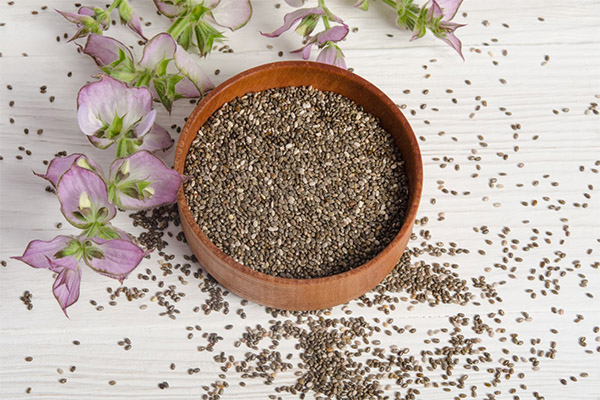
For diabetes mellitus
Being rich in fiber, protein and omega-3 fatty acids, chia seeds can support metabolic health and therefore regulate blood sugar levels. There are many studies that have shown that chia seeds can be a very effective natural treatment for diabetes, all because of their ability to slow down digestion. When they interact with liquids, they form a gelatinous coating that prevents sugar spikes, which has a positive effect on blood glucose balance. Of course, chia seeds are not a panacea, but this product is effective in the therapy of diabetes.
The daily recommended rate of consumption is 37 g of seeds, and the course should not last more than 12 weeks.
Important: The glycemic index of chia seeds is 30 units.
Pancreatitis
It is possible and even necessary to use the seeds with pancreatitis. To feel the effect of the product, you should use 30 grams of seeds up to 3 times a day, and they should be drunk with plenty of water. The course of treatment should last about 30 days, after which a 2-3-week break should be made.
With gastritis
With gastritis, it is strictly forbidden to use chia seeds, because the fiber when dissolved has a negative impact on the stomach, damaging the inflamed mucous membrane.
For the intestines
Chia seeds are useful for the intestines, as they contribute to its purification, normalization of stool and improve peristalsis. Consume a day should not be more than 1-2 tsp. seeds. The course to normalize the work of this organ lasts up to 3 weeks.
When constipation
Constipation or difficult emptying can cause serious discomfort. In this case, the accumulation in the body of toxins can lead to negative consequences. Chia seeds help to cleanse the intestines of putrefactive food and feces. To improve stools, you need to take 2 tsp. of grains and drink them with clean water (1 glass) without gas.
In gout.
In gout, chia seeds are allowed to be consumed. The seeds help to restore metabolic processes leading to tissue and joint problems. It is recommended to consume the product together with vegetables, fruits, yogurt and porridge.
Chia seeds in cosmetology
The main purpose of masks that contain Spanish sage is hydration, as the product helps to maintain normal moisture levels in the deeper layers of the skin and prevents dehydration.
For Face
Moisturizing mask
- Mix yoghurt (250 ml) with egg whites (2 pcs). Add chia seed oil (15 ml).
- Apply the mask to the skin (prepared in advance). Keep for 10 minutes. Wash your face with cool water.
Scrub for delicate skin
- Mix the seeds (2 tbsp.) with coconut oil (125 ml.) and lemon juice (1 tbsp.).
- Moisten the face with warm water and apply the resulting mixture.
- Hold for 2-3 minutes. Wash your face with cool water. Remove the mask with a moistened washcloth.
Mask with a lifting effect
- Soak chia seeds (2 tbsp.) in water (3 tbsp.). Allow the mixture to stand for 12-15 minutes (until it swells).
- Add honey (1 tsp.) and mix.
- Apply the mixture to the face. Hold for 10 minutes. Wash your face with water.
For Hair
Hair revitalizing mask
- Pour the seeds (80ml) in 500 ml water. Whisk thoroughly and leave for 7-10 minutes.
- Whisk the mixture one more time and leave it in the fridge (for 15 minutes).
- After taking it out of the fridge, add lemon juice (45 ml) to the mixture and mix.
- Apply the mixture to the hair. Keep for 15 minutes. Rinse hair with cool water.
Mask with chia seed oil
- Mix with burdock oil and coconut oil.
- Apply the oil to the hair and rub vigorously into the roots.
- Keep for 2 hours. The ideal application is to soak overnight. You can wear a special cap on your head.
- Wash your head with shampoo, and then rinse your hair with lemon juice (diluted).
Harms and contraindications

- People with gastrointestinal problems should be cautious about consuming the seeds, because they can cause excessive gas and bloating.
- Also, this product can cause allergies, which is expressed as digestive disorders, rashes on the skin or even difficulty breathing.
- People who are allergic to mustard or sesame seeds should also be wary of this product.
- The seeds are not recommended for low blood pressure. In cases where drugs are taken to regulate blood pressure, a doctor should be consulted about the use of the seeds.
- The seeds are strictly forbidden in cases of acute diseases, especially those associated with gastrointestinal disorders.
- During pregnancy, it is worth reducing the dosage, and in the case of side effects, exclude the product from the diet altogether.
- Due to the hard shell of the seeds, it is not recommended to use them and in cases of diseases of the mucous membrane of the mouth and gums.
How to choose and store chia seeds
You can buy chia seeds in a pharmacy, a health food store or even in an online store. It is important to pay attention to the quality of the product. Here are some signs of the quality of the seeds:
- The heterogeneous color of the seeds, flecks and patterns of brown hues, the presence of white grains.
- Round shape, resembling miniature quail eggs.
- Unleavened flavor, with a hint of walnut.
- Lack of odor. Sometimes a slight smell of flour may be present.
After purchase, the seeds should be poured into an airtight container and placed for storage in a dark place at up to 25°C. It is important that the product is not exposed to sunlight and moisture.
How to consume chia seeds
The seeds can be consumed both naturally and as an ingredient in various dishes. For example, the seeds can be sprinkled on oatmeal, yogurt or other healthy dishes and foods. When the seeds are added to wet food, they soften, so you may not even notice them in the dish. The seeds can also be used to make porridges, puddings, smoothies, and even for baking if you grind them into flour beforehand.
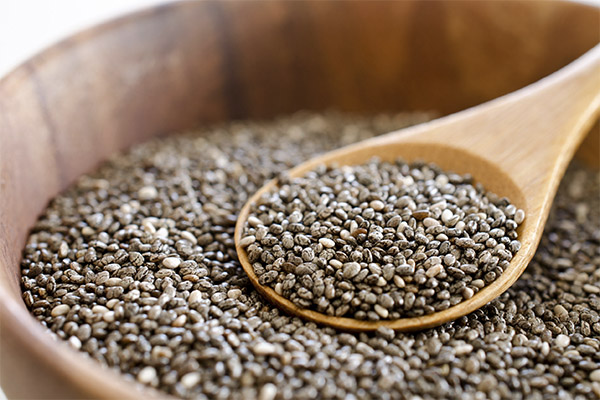
How much you can eat a day
Experts do not recommend consuming more than 15 g (about 1 tbsp.) of chia seeds per day on a regular basis.
You can eat them at night and on an empty stomach.
The best time to eat chia seeds is in the morning and evening. In the morning, it is recommended to eat the seeds on an empty stomach, and they can be mixed with dairy products. In the morning the product will fill the body with energy, and in the evening before going to bed it will give satiety, which will help to avoid overeating.
Do I Wash Chia Seeds Before Drinking?
You should only wash the seeds before eating them, as they may be gone for several hours if they come into contact with water.
What you can make with chia seeds: recipes
Chia seeds are quite a versatile product, as they provide a wide field for experimentation. They are excellent along with cold snacks, salads, sauces and various desserts. For those who want to include this nutrient-rich product in their diet, it is recommended to take note of some simple recipes.
Porridge
Ingredients:
- coconut milk - 50 ml;
- agave syrup - 1-2 tbsp;
- water - 150 ml;
- chia seeds - 3 tbsp;
- Banana - 1 pc.
How to prepare:
- Mix the seeds with the coconut milk and agave syrup in a deep bowl. Stir well, adding water a little at a time. Stir until smooth.
- Leave it to infuse for 2 minutes (you can chop some fruit and berries at the same time).
- Add fruit and berries to the ready porridge.
Smoothie
Ingredients:
- berries (any, preferably frozen) - 1 cup;
- pomegranate juice (natural) - 0.5 tbsp;
- water - 0,5 tbsp;
- chia seeds - 0,5 tbsp.
How to Prepare
Mix berries with juice, water and seeds in a blender and whisk. Pour the mixture into a glass.
Pudding
Ingredients:
- Chia seeds - 4 tbsp;
- mango - 1 pc;
- coconut milk - 250 ml;
- vanilla essence - 10 drops;
- sweetener (any);
- fresh mint.
How to prepare:
- Mix coconut milk with seeds, vanilla and sweetener. Place in refrigerator for 6 hours to thicken.
- Mango in a blender.
- Transfer pudding to cups, top with whipped mango and fresh mint.
Interesting facts about chia seeds
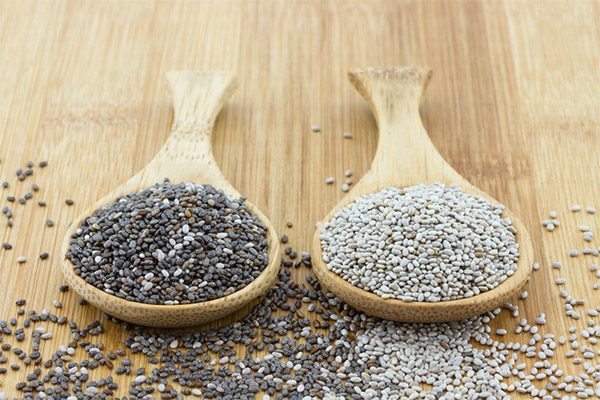
- Although chia seeds have become popular in the last few years, they have been a staple in the diet of Native Americans and Mexicans for hundreds of years. They have been used to make breads, porridges, and for medicinal purposes.
- Chia seeds can absorb large amounts of liquid. Soaking the product in water, vegetable milk or any liquid creates a gelatinous mixture that is ideal for creating a creamy pudding or thick sauce.
- Seeds were widely used by ancient tribes to maintain strength and stamina during battles or long campaigns. One such tribe (still living in the same territories today) are the Tarahumara Indians living in Mexico. They are world-renowned for their extraordinary endurance and their ability to run long distances. The most interesting fact is that they still use chia seeds to replenish their strength during their runs.
- Chia seeds were used as currency at one point in history. Highly prized by the Aztecs, the grains were one of the main means of payment at that time. The nations and communities that were conquered by the Aztecs paid tribute to them with chia seeds. There is evidence in ancient documents that the Aztecs harvested up to 4,000 tons of seeds a year from their colonies.
- About 500 years ago, the Spanish invaders destroyed almost the entire crop of chia plants. When the conquistadors set foot on the shores of South America, they met local residents who were very reverent about the seeds of chia. The invaders forced the natives to destroy all the crops. This was done to establish their own order and to show the natives that their possessions no longer belonged to them.
- In the 1990s, Dr. W. Coates rediscovered chia. The doctor was the leader of a project that aimed to find potentially profitable cash crops to grow in Argentina. He was able to test various plants, which allowed him to determine the commercial potential of each one. When chia seeds were discovered and thoroughly researched, the scientist decided to devote effort and time to recovering this particular crop so that people around the world could benefit from these grains.
- Insects don't like chia so they don't harm the plant, allowing it to grow vigorously without the use of pesticides.
«Important: All information on this site is provided for informational purposes only purposes only. Before applying any recommendations, consult a health care professional. specialist. Neither the editors nor the authors shall be held liable for any possible harm caused by materials."

